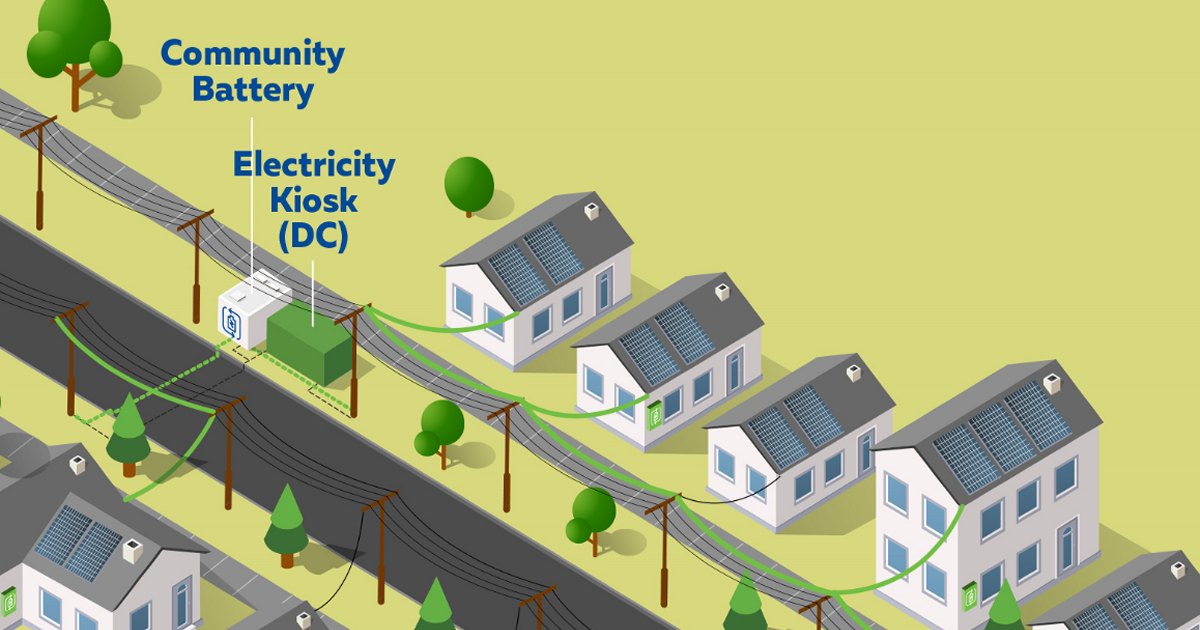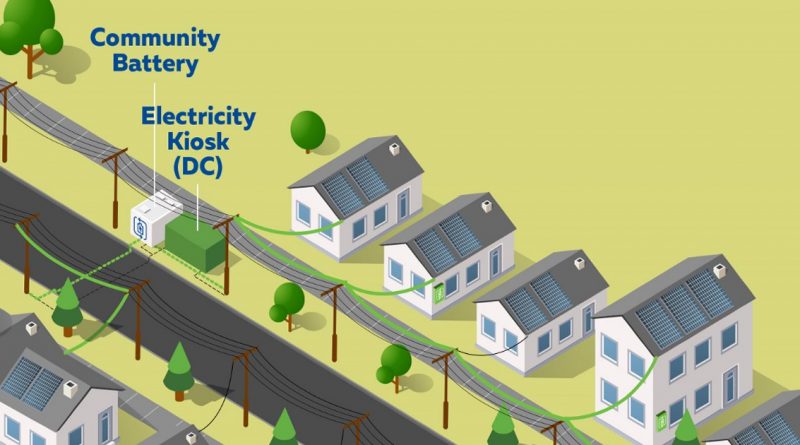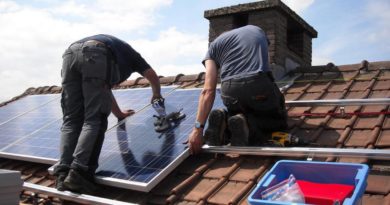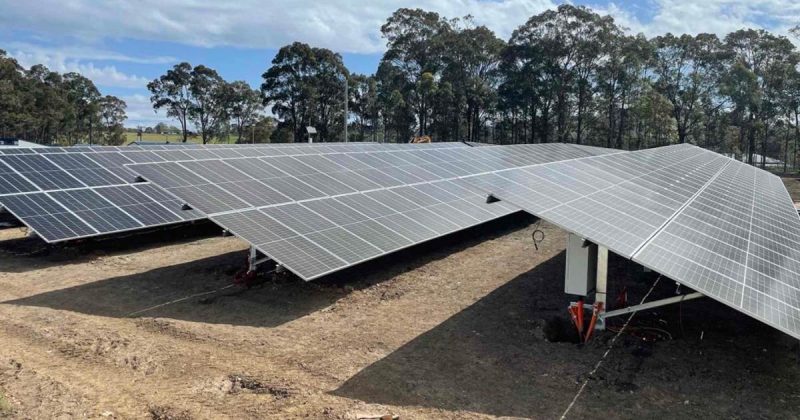Community Batteries: Power To The People

Image: McKell Institute (Note: the DC stands for “Distribution Centre” not “Direct Current”)
There’s been a lot of chatter about community batteries recently – here’s a brief overview of what they are, how they work and some of their benefits.
Home battery storage is still costly and likely will still be for some time. An alternative is the community battery concept, which can provide cheaper access to energy storage while providing many benefits – including to non-solar owners.
What Is A Community Battery?
A community battery is essentially a large shared battery installed in a neighbourhood enabling local solar power system owners to virtually store their surplus electricity for use when their solar panels aren’t meeting household energy demand. A portion of the battery’s capacity may also be set aside for other purposes.
Community batteries have been around for a while. Among the first was a trial by WA’s Western Power/Synergy involving a 420kWh Tesla Powerpack battery system connected to the grid in the Mandurah suburb of Meadow Springs that kicked off in 2018.
Since that initial trial, a bunch more batteries have been installed under the program. Each participating customer is allotted 8kWh of virtual storage at a cost of $1 to $1.90 per day depending on the location. In addition to that cost, the participants also forego the feed-in tariff for whatever they are storing. But assuming sufficient utilisation, it’s still cheaper than buying a battery system. A drawback is a lack of backup power if there’s mains grid supply interruption.
The experience in Western Australia has been pretty positive overall and community batteries are starting to pop up elsewhere across Australia. While already financially viable, costs should continue to decrease and functionality and flexibility will improve as uptake increases to cater to the individual needs of customers. For example, allotted storage may be flexible to meet individual requirements.
Benefits Of Community Batteries
In addition to reducing the cost of storing solar energy, some of the other benefits include:
- Enabling more solar systems to be installed on a network without costly infrastructure upgrades.
- Helping to keep the grid stable by absorbing surplus rooftop PV electricity generation during the day and releasing it during peak times and at night.
- Further reducing emissions.
- Enabling households to potentially participate in the electricity market.
- Providing local apartment residents with access to solar-generated electricity.
- Cutting electricity costs by reducing reliance on fossil fuels during periods of peak energy demand when electricity prices are at their highest.
More detail on community batteries can be found in a recently released report from the McKell Institute, including recommendations on how government and regulators can support their uptake.
“Batteries are a big part of reducing electricity prices as Australia becomes a renewable energy superpower,” it states.
The Institute is an independent body dedicated to providing practical and innovative solutions to contemporary policy challenges.
Original Source: https://www.solarquotes.com.au/blog/community-solar-batteries-mb1944/

















